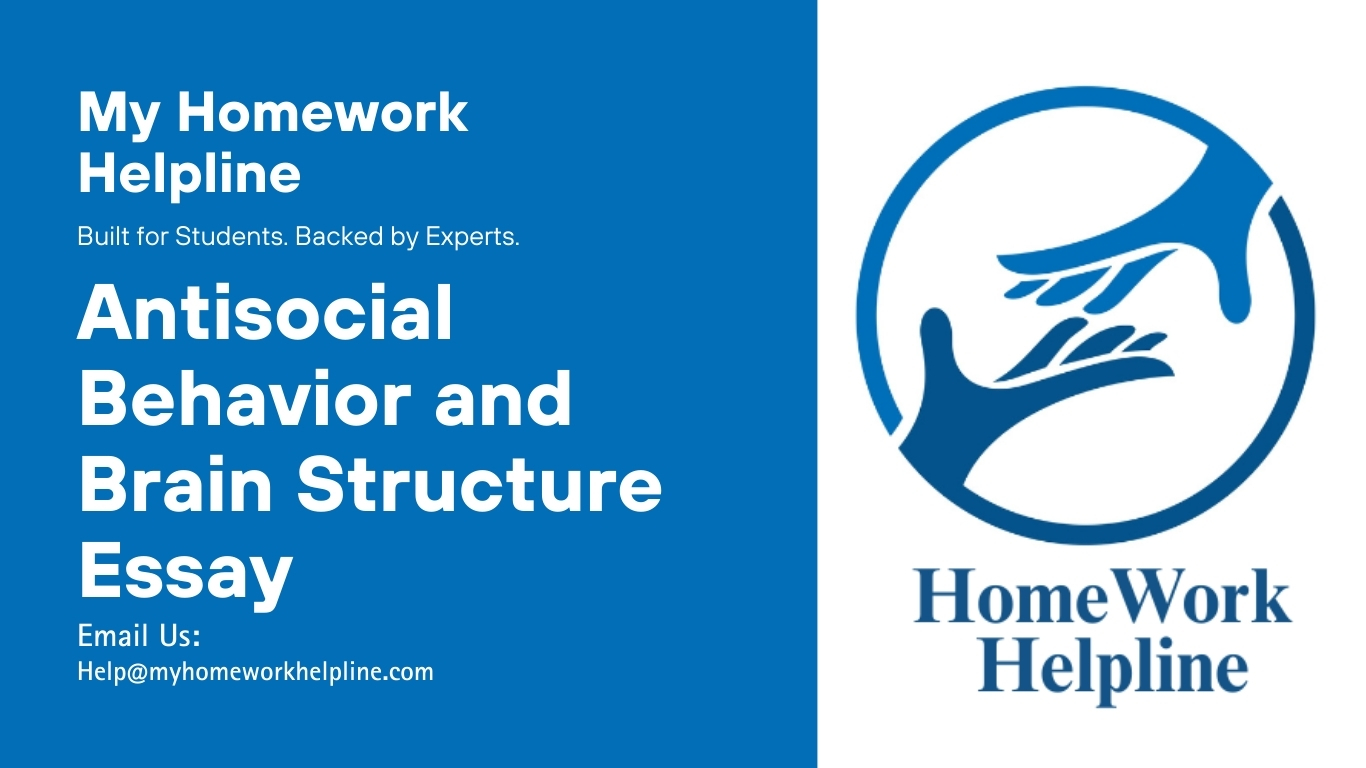Antisocial Behavior and Brain Structure Essay
Studies have established that people who engage in persistent antisocial behavior have characteristic differences in their brain structure (Yang et al., 2008). Most people who express antisocial behaviors do so in their adolescent lives, but a few do not reform, and the behaviors continue to adulthood. Using brain imaging techniques to assess the structural and functional integrity of the brains of people with antisocial and other mental health and behavioral issues has provided groundbreaking findings. The findings impact not only treatment but also law implementation. A study by Gregory et al. (2012) found that offenders with antisocial personality disorder and syndrome of psychopathy had significantly reduced gray matter volumes bilaterally in their anterior rostral prefrontal cortex and temporal pulse compared with non-offenders. Reduced gray matter volume in the standard areas impacted moral reasoning, perfect processing, and social-emotional processes like guilt and embarrassment, which are highly linked to abnormalities in antisocial behaviors and psychopathy.
Research notes that it is reasonable to hypothesize that neurobiological mechanisms are part of the risk factors causing and maintaining aggressive behaviors among offenders. A dysfunction in the ventromedial prefrontal cortex, which is responsible for emotional reactivity, is linked to reactive violence. Abnormalities in the amygdala and ventromedial prefrontal cortex are related to instrumental violence, difficulty recognizing fearful facial expressions, aversive conditioning, and reinforcement learning. Substance or drug abuse does not induce these differences in the target areas but can enhance their development. That shows that these individuals lack the capacity to develop social skills essential to preventing antisocial behaviors. These findings imply that people with antisocial personality disorders and psychopathy require lifelong support to manage these abnormalities.
Need help crafting a clear and insightful essay on antisocial behavior and brain structure? Our expert team offers criminal law assignment assistance and homework support tailored to criminology essays. Get step-by-step guidance, original content, and timely submission help. Let our professionals help you analyze neurobiological factors, offender behavior, and moral reasoning issues to produce a high-quality essay that meets academic standards.
References
Gregory, S., Simmons, A., Kumari, V., Howard, M., Hodgins, S., & Blackwood, N. (2012). The antisocial brain: psychopathy matters: a structural MRI investigation of antisocial male violent offenders. Archives of general psychiatry, 69(9), 962-972.
Yang, Y., Glenn, A. L., & Raine, A. (2008). Brain abnormalities in antisocial individuals: Implications for the law. Behavioral Sciences & the Law, 26(1), 65-83. https://doi.org/10.1002/bsl.788

